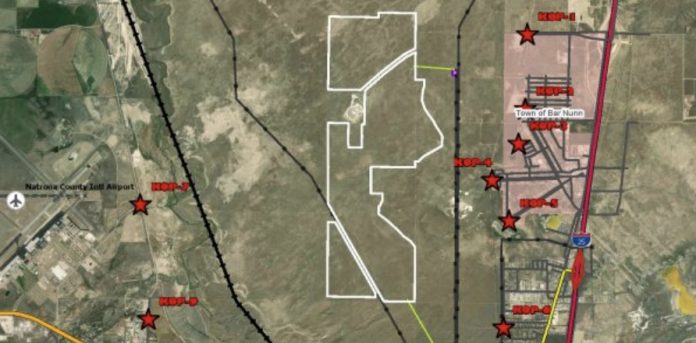The 240 MW Dinosolar project northwest of Casper, Wyoming received a permit last week from the Natrona County Planning Commission, and still requires further approvals, as reported by The Casper Star-Tribune.
Project developer Enyo Renewable Energy said the completed project would yield $2.04 million in property taxes in the first year of full operation, and $46.7 million over the project’s 35-year lifespan.
Rocky Mountain Power, a multi-state subsidiary of PacifiCorp that provides 55% of Wyoming’s retail electricity, has developed a resource plan that projects 1,821 MW of new solar capacity by the end of 2023, along with early closure of Wyoming coal-burning units starting in 2023.
Wyoming has just 109 MW of solar capacity, while it has been the nation’s largest producer of coal since 1986, says the U.S. Energy Information Administration.
Wyoming regulators last November opened an investigation into Rocky Mountain Power’s resource plan, focusing on planned coal plant retirements, as reported by Cooper McKim with Wyoming Public Media. The Wyoming Public Service Commission’s order states that closing coal plants “prior to the end of their established depreciable lives may adversely impact the cost and reliability of service … while producing significant negative economic impacts.”
Solar industry perspective
“Wyoming has always been a place where people have made a living from vast natural resources,” said Richard Mack, treasurer of the Wyoming Solar Energy Association, when asked what is needed to advance solar power in Wyoming. “Markets change and this has resulted in many boom and bust cycles across the board, not just in the energy sector,” he added. “Some changes take time, especially when we are speaking of changing conceptions and attitudes.”
As for small-scale solar—the business of most of the association’s members—Mack said that “Wyoming does have a net metering policy that, in my opinion, is fair although capped at 25 kW. Obviously this is sufficient for the vast majority of residential and most commercial customers throughout our state. Efforts have been made in the past to increase this limit but were met with strong opposition.” Any credit left at the end of the calendar year by a net metering customer “is purchased at the utility company’s avoided cost, which is about 25% of retail cost,” he said.
One of the association’s primary goals “will be to promote public education and understanding to help develop a spirit of cooperation across industries, parties, and departments,” he said. “We are glad to see our utility companies and state offices, including the Wyoming Department of Fire Protection and Electrical Safety, making efforts to streamline system approvals and permitting.”
Tourism

As for the Dinosolar project, the project’s website looks ahead to successful project completion, showing “key observation points”—the red stars in the image above. That map of observation points, together with the project’s logo, at right, suggests the potential for the solar project to become a tourist attraction.






